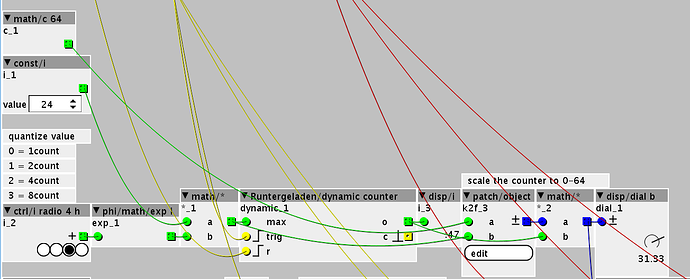-about 'ktransport' and 'stransport':
...code looks good to me,
the value at the inlet 'factor' is ADDED to the object's parameter 'factor'...
the parameter is set to a minimum of 1 (it has to,everything else would cause problems)
so,if the value at inlet 'factor' is set to 1,the ACTUAL factor is 2.
maybe that was the problem on your side...
anyway,I added a helpfile and just synced.
about 'fade' for ldub:shouldn't be much of a problem to add this.
I'll add this to my agenda for the next issue of the looper-objects,
there will be quite a few fixes and also performance-improvements...


